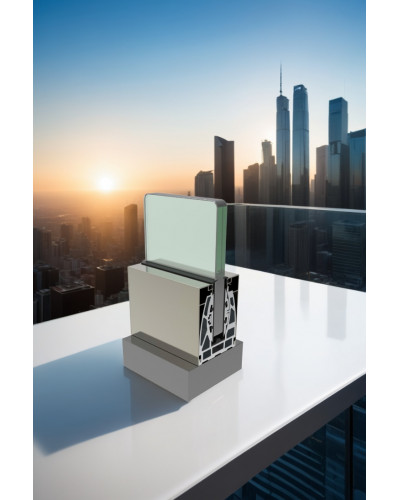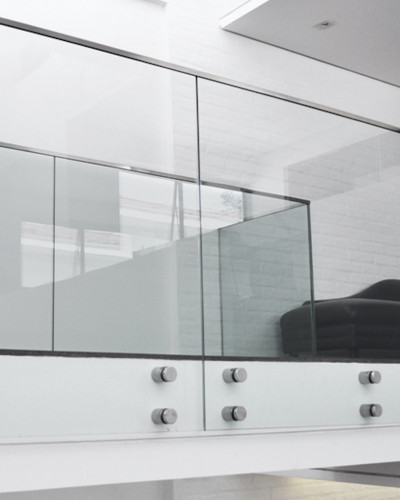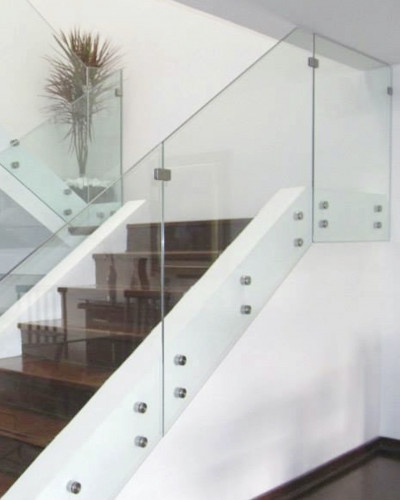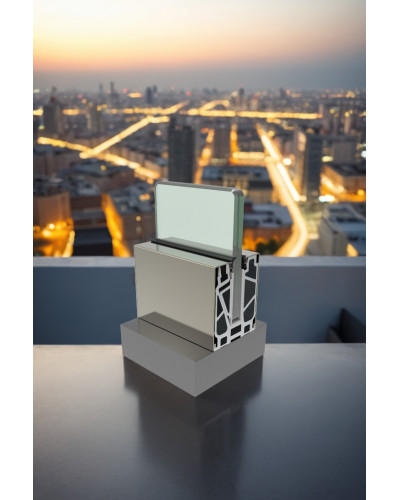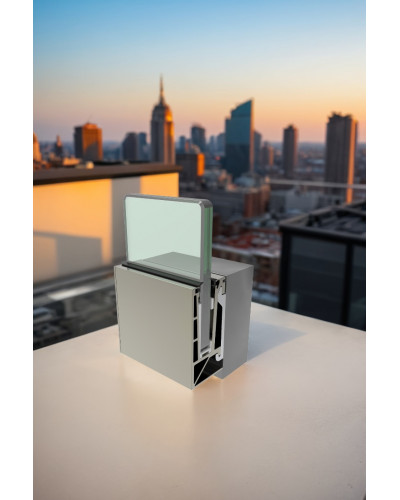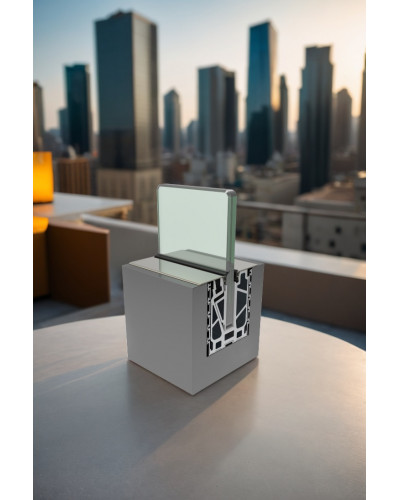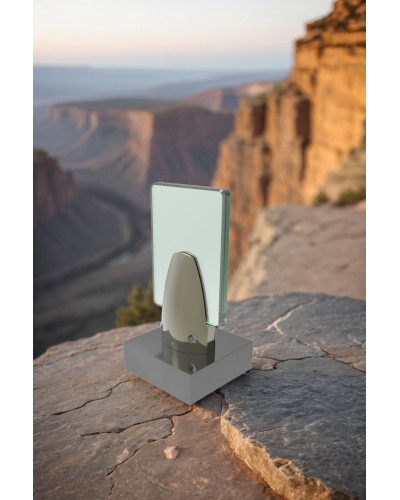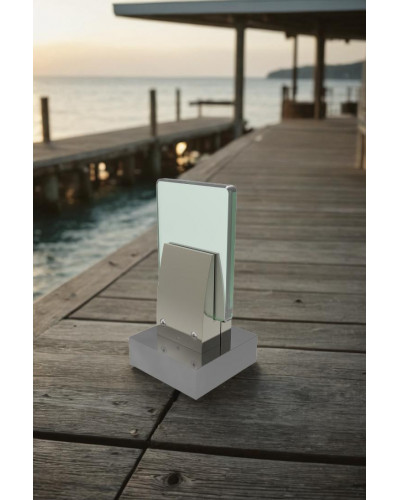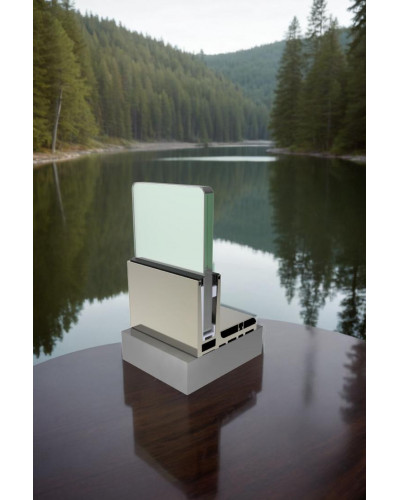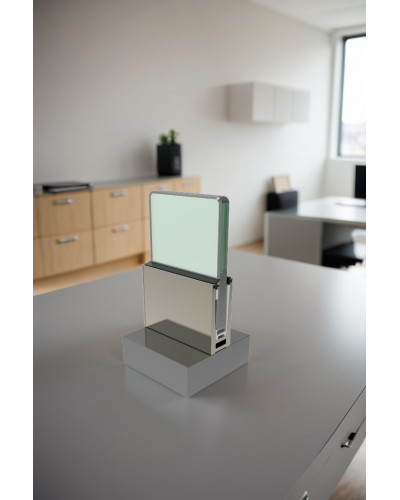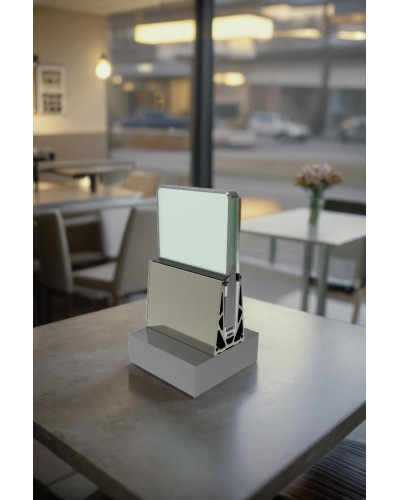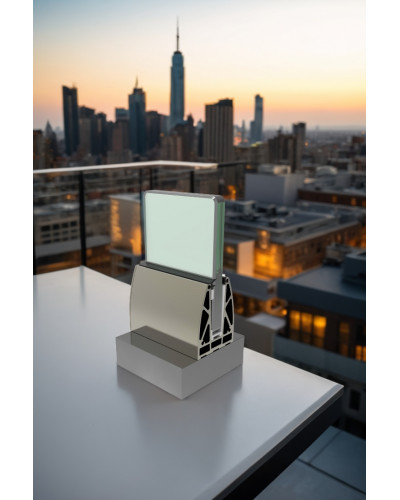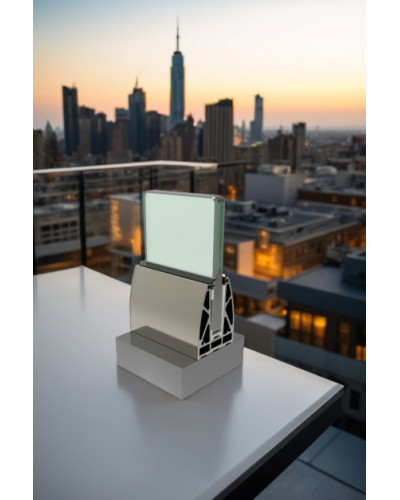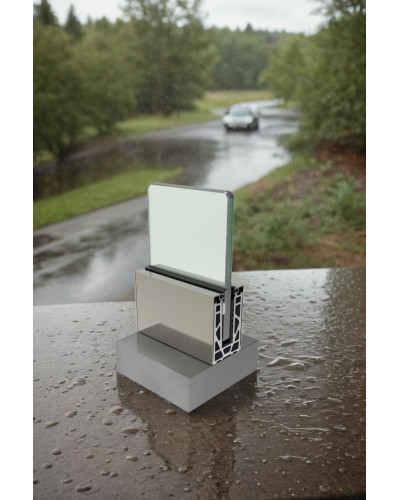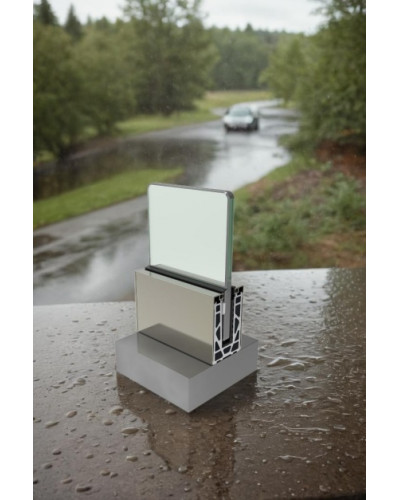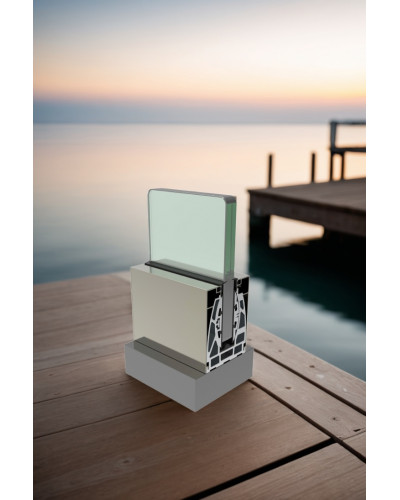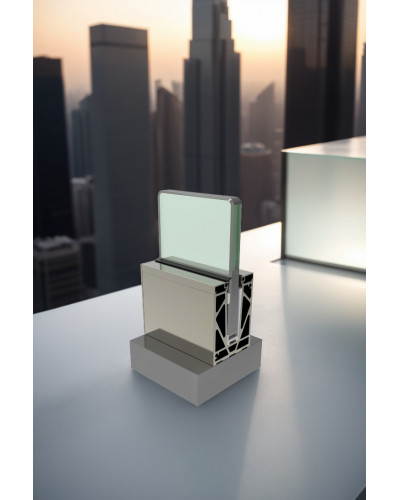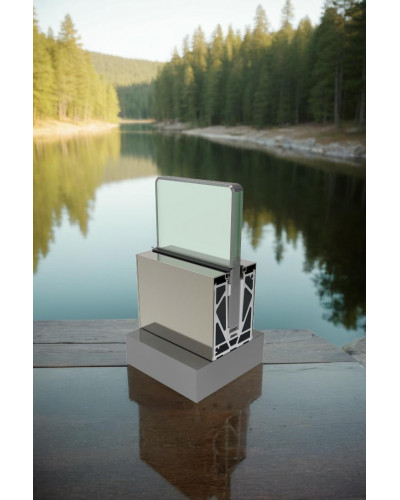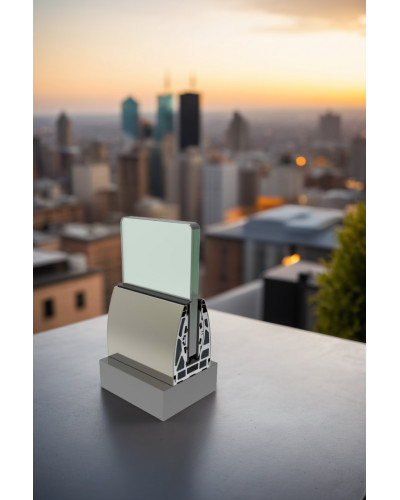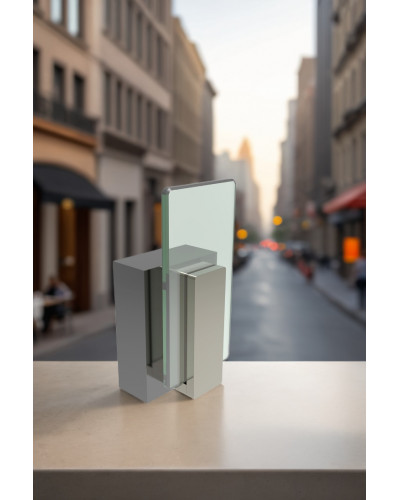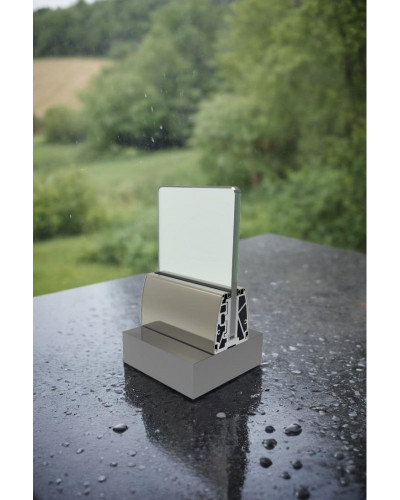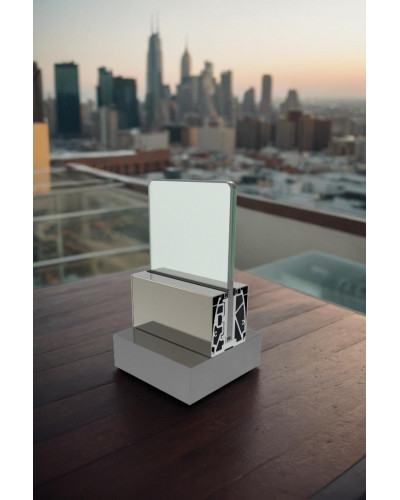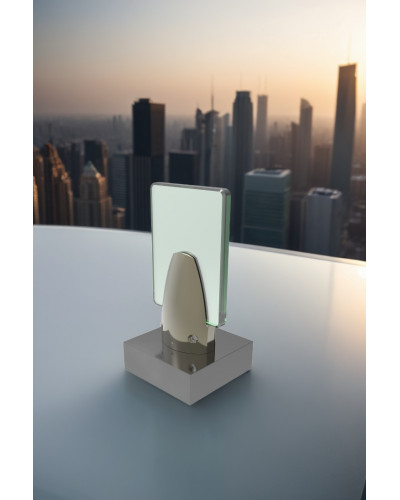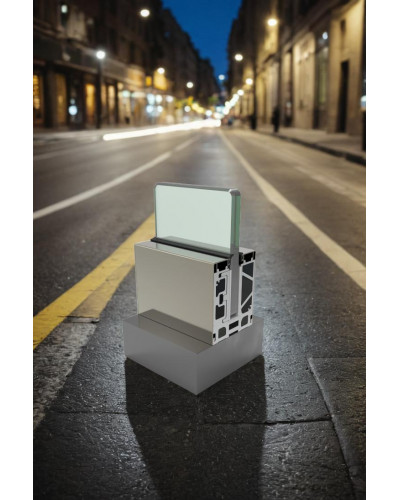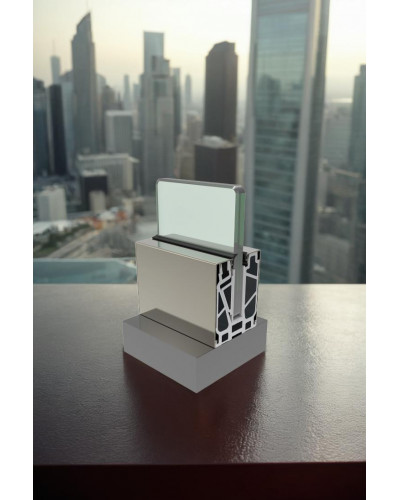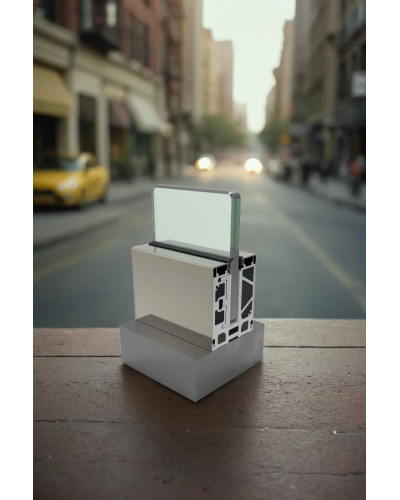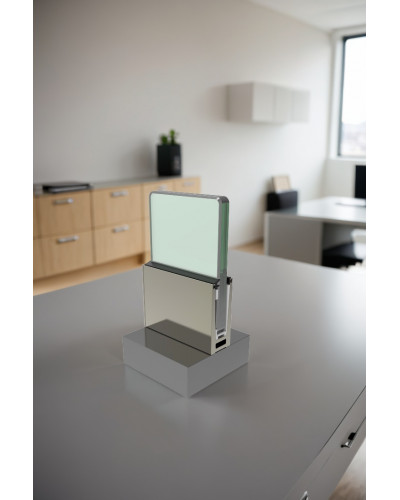Railings-glass balustrades
Glass railing destination
Railing-glass.com glass balustrades for interiors and exteriors have many uses. Thanks to their transparency, they open up and shape spaces. They are commonly installed on terraces, balconies, mezzanines and staircases. Glass window and balcony railings are also available. They are used to delimit spaces and openings at height. If you have a swimming pool, you can opt for glass pool railings.
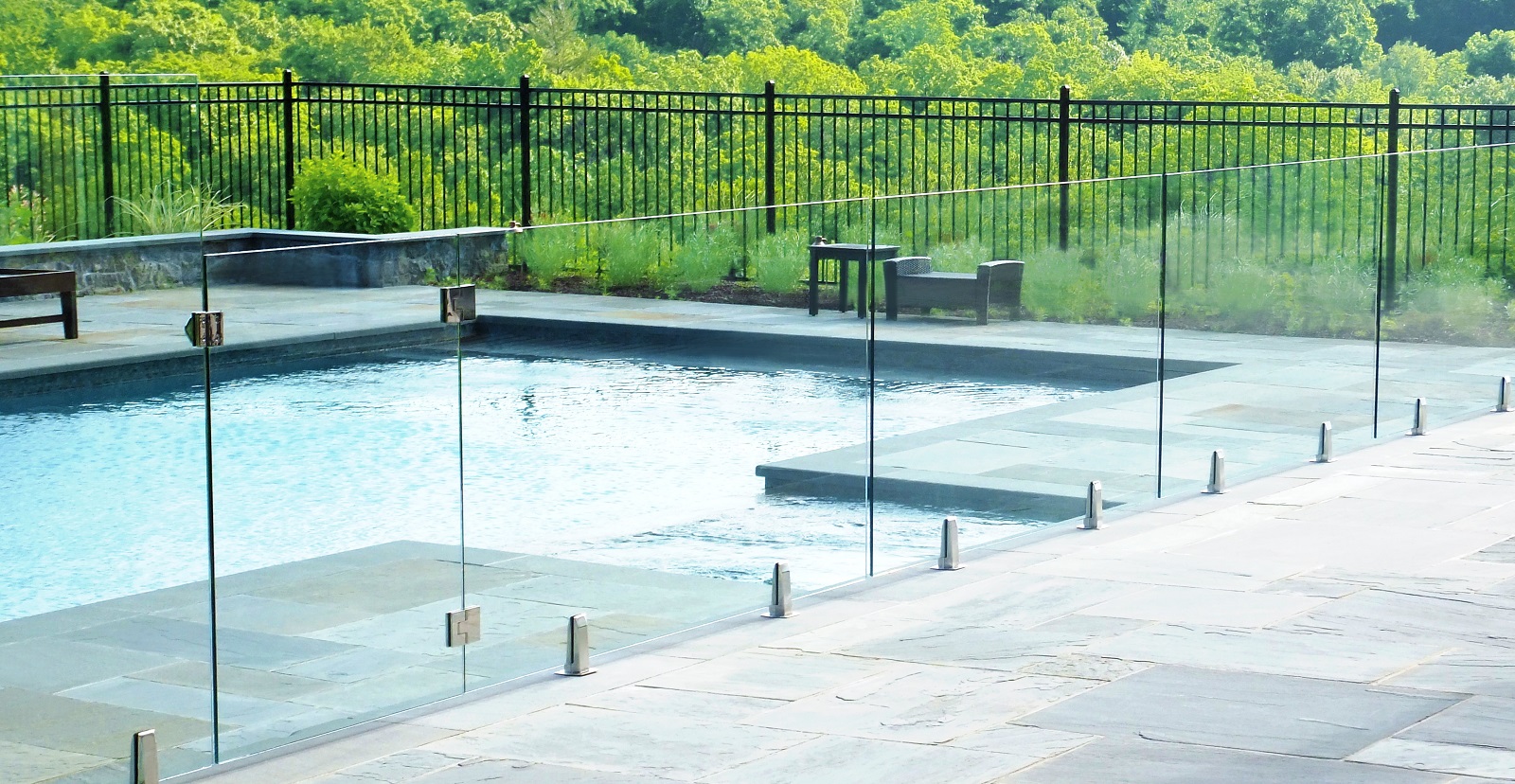
Using glass railings
Glass balustrades offer a wide range of possibilities for designing both indoor and outdoor spaces in an original and functional way.
Outdoors, their transparency lets you take full advantage of the view. On a terrace or balcony, they give the impression of a larger, clearer surface. When used as a glass pool railing, they let natural light penetrate to the bottom of the pool, creating a very pleasant plunging effect. Swimmers can admire the scenery as they move safely through the water.
Indoors, glass balustrades add elegance and design, while providing a safe passageway. On staircase balustrades, their discretion does not disturb the perception of the staircase, which retains all its character. They delimit mezzanines or suspended terraces, giving an impression of lightness and transparency.
Openings such as picture windows or bay windows can be fully and aesthetically protected by the installation of glass balustrades for interior and exterior use. Light can penetrate rooms generously without compromising safety.
Technical features of our glass balustrades
Glass balustrades require specific technical skills in both design and installation.
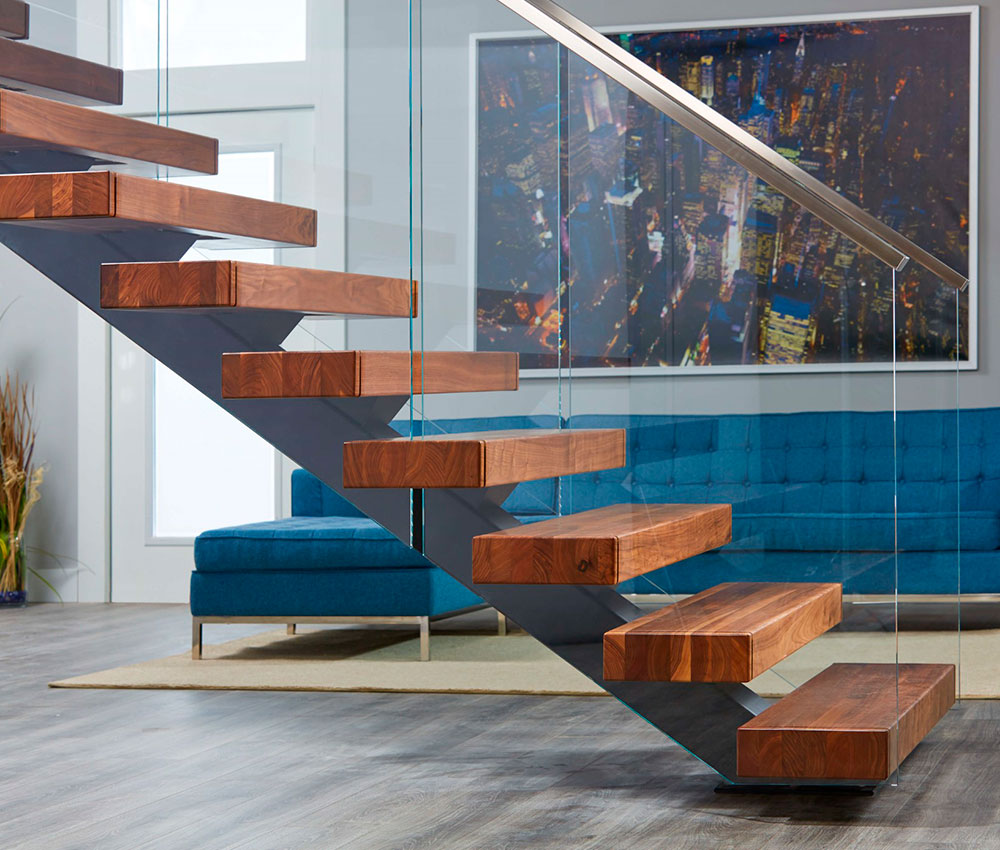
Types of glass railing fastening
The choice of fastening depends on the style required and the technical constraints of each project. French fastening uses aluminum profiles that are embedded in wall covers or floor strips. Once in place, the uprights and crosspieces are no longer visible, giving the impression of floating glass.
English-style fastening is achieved using solid profiles fixed directly to walls or floors by glue or screws. Although less aesthetically pleasing, it has the advantage of requiring no masonry modifications. It is particularly suitable for renovations.
An alternative solution is flush mounting. Profiles are inserted into shallow wall covers or grooves, enabling them to be partially concealed. This offers a good compromise between aesthetics and ease of installation.
Glass
The glass used is usually laminated glass, consisting of several panes glued together. This technology offers greater resistance to external aggression than simple glazing.
The panes are assembled using one or two thin PVB (PolyVinyButyral) or EVA (EthylVinylAcetate) interlayers. These interlayers help distribute stresses in the event of impact over a larger surface area.
Laminated glass is generally 88.4mm thick for guardrails, to meet safety standards. Laminated glass can also be tempered at the manufacturing stage for even greater strength. Tempering then confers Securit safety certification.
Glass treatment
An anti-fog treatment is systematically applied. This surface treatment makes the glass more hydrophobic. Water runs off and is quickly evacuated in droplets, instead of spreading out and running off slowly.
An anti-fouling treatment is also applied. Over time, the sun's rays, pollution and bad weather can leave marks and deposits. These alter the aesthetic appearance of the glass railing. This treatment creates a microscopic barrier on the surface of the glass, preventing particles from accumulating and facilitating their natural removal by rain.
Height and dimensions
The dimensions of interior and exterior glass balustrades are defined by safety standards. These vary according to use and context. For terraces and balconies, a minimum protection height of 100 cm is mandatory. This is measured vertically from the top of the handrail to the ground. This dimension guarantees sufficient safety for all types of public, including children.
Around swimming pools, the height of glass pool railings must be raised to a minimum of 110 cm. This small increase of 10 cm is explained by the risk of drowning and the need to prevent accidental falls into the water.
For stairwells, a height of 90 cm is recommended for glass staircase railings. This provides sufficient protection while preserving vision of the steps.
Led balustrades
LED technology allows glass balustrades to be subtly illuminated for a touch of modernity, especially at night.
Custom-colored LED strips or modules are invisibly integrated into the fastening profiles. They create a luminous border that enhances the structure of the glass swimming-pool guardrail or glass staircase guardrail.
Thanks to a programmable dimming system, the lighting can be adapted to the desired mood at different times of the day. The LEDs chosen are energy-efficient and long-lasting. They switch on automatically at sunset and off at dawn, so as not to disturb sleep.
Technical advice and personalized follow-up
Installing interior and exterior glass balustrades requires technical expertise. We're with you every step of the way.
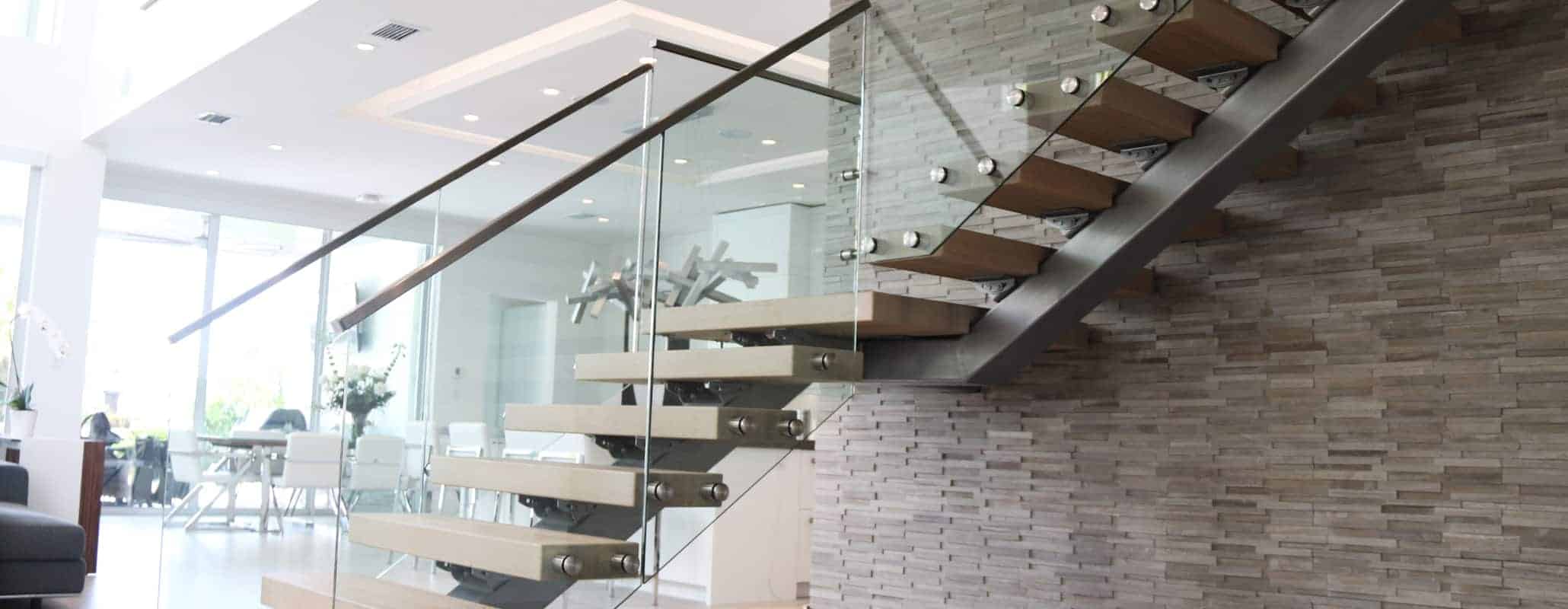
Our made-to-measure glass railings
Because every architectural project is unique, Railing-glass.com offers you a made-to-measure design service for your glass railings. Right from the design phase, an experienced technician is dedicated to your request. He or she will visit the site with you to determine the specifics of the existing structure, take measurements and understand your aesthetic and technical requirements.
On the basis of these specifications, our engineering department designs the entire solution on your 3D site plan, using CAD (computer-aided design) software. Uprights, crosspieces, dimensions and fastenings are precisely modeled. You can visualize the final rendering before the glass railings are manufactured.
Glass railing installation
Installing a glass railing requires technical expertise. Our assembly teams can take care of the installation. Our professional installers are trained in the specific features of glass railings. They carry out the entire installation in accordance with the rules of the trade, ensuring perfect alignment and compliance with safety standards.
You can also take care of the installation yourself. This solution is ideal for DIY enthusiasts who want to do the work themselves. We provide detailed documentation with plans, photos and videos illustrating each step on Railing-glass.com.
Maintenance and cleaning
To preserve the transparency of your glass railing over time, regular maintenance is essential. Remove dirt and residues by regular cleaning with glass-specific products. Choose a mild, non-abrasive detergent to avoid scratching the treated surface.
Outside, rainwater naturally washes away any dust. For more thorough cleaning, use a microfiber cloth soaked in diluted detergent. Once a year, use a degreasing solution for the dirtiest areas.

